Martial Arts Kick Shields & Muay Thai Pads
-
$79.95
-
$54.95
-
$52.95
-
$39.95
In karate, a kickshield lets students practice thrust kicks, side kicks, and jump kicks with real resistance. It teaches them how to strike through the target using proper hip alignment and control. A karate kick shield also helps refine balance and form, especially during high-intensity drills where air kicking isn't enough.
In taekwondo, students use kick shields to sharpen speed and flexibility. Drills often involve rapid-fire roundhouse kicks, axe kicks, and spinning hook kicks. A taekwondo kick shield allows the holder to raise or lower the target, forcing athletes to adjust their technique. During belt testing or sparring prep, these shields are used in nonstop circuits to build repetition and conditioning.
Muay Thai fighters use kicking shields for low kicks, teeps, and heavy body shots. While thai pads are ideal for combinations, a muay thai kick shield is better for raw power. For leg kick conditioning, one partner braces the kickshield against their thigh while the striker lands repeated shin kicks. It's standard training in most Muay Thai gyms.
MMA and self-defense programs rely on martial arts kick shields for drills that involve multiple strikes and movements. You can sprawl, reset, then explode into a knee or elbow strike. You can simulate ground-and-pound by dropping into mount and striking a shield held at chest level. Krav Maga instructors often combine shield drills with attack-response scenarios, forcing students to strike under pressure.
Different shapes serve different purposes. A curved martial arts kick shield catches round kicks more cleanly. A flat rectangular shield works better for front kicks, knees, and angled strikes. Multiple handle options let the holder adjust position to absorb impact safely. When you're drilling powerful techniques, grip stability makes a big difference.
Materials matter. A quality kick shield is built with dense foam padding and wrapped in synthetic leather or vinyl. It should hold its shape after hundreds of strikes. Cheap kicking shields break down fast, compressing in the middle and becoming unsafe to use. For instructors running daily classes, durability is essential.
Thai pads and kick shields are often used together, but they serve different roles. Thai pads are usually worn in pairs and are ideal for combos like jab-cross-roundhouse. Kick shields are larger, hand-held pads used for focused power drills. When you're working on a single strike or building a beginner's technique, a kick shield is the better choice.
Youth programs benefit from kicking shields as well. Young students need visual targets and clear feedback. When they land a clean front kick into a kickshield and hear the impact, it builds focus and confidence. Instructors can create circuits with multiple kicking shields to keep the pace high and help kids work on balance, coordination, and accuracy.
A well-equipped gym keeps a variety of martial arts kick shields on hand. Lighter models are good for speed drills and youth classes. Heavy-duty kickshields are built for adult fighters and full-contact training. Smaller shields challenge accuracy. Larger ones absorb more power. Choosing the right tool keeps your training efficient and safe.
If your training setup only includes hanging bags, you're missing the mobility and versatility that kicking shields offer. They let you train with a partner in a more realistic setting, helping you develop strike placement, power, and reaction timing.
KarateMart.com has kick shields for every level of training. Whether you need a taekwondo kick shield for refining form, or a tough muay thai pad that can take full-contact shots, we've got you covered. These kickshields are used by instructors, athletes, and martial artists who train hard and expect their gear to hold up.
What is the Difference Between a Thai Pad and a Kick Shield?
Both Thai pads and kick shields are essential tools for martial arts training, but they serve different purposes and are used in slightly different ways.
Thai Pads
Thai pads are a staple in Muay Thai training, but they're also used in other striking arts like kickboxing and MMA. Unlike kick shields, Thai pads are designed to be held by a training partner. They are usually smaller and have a handle, which allows the holder to move them around and simulate various combat angles and strikes. The padding inside is generally thick, but flexible, designed to absorb the force of elbows, knees, kicks, and punches. The size and shape of Thai pads make them excellent for developing power, accuracy, and timing in your strikes.
What makes Thai pads unique is their ability to mimic the unpredictability of a real opponent. When holding the pads, your partner can adjust the position or angle, giving you the opportunity to practice hitting different targets, whether it's landing a knee to the midsection or a roundhouse to the thigh. They also allow for a more dynamic training session, as you can quickly switch from different striking techniques in a fluid, real-world scenario.
Kick Shields
On the other hand, kick shields are larger and more rigid, designed to absorb powerful kicks and strikes. They're not held by handles in the same way as Thai pads; instead, kick shields are usually held with straps or grips that allow the user to position them in a stable, stationary manner. While they can be used for any type of strike, kick shields are especially useful for kick-heavy martial arts like karate, taekwondo, and Muay Thai, where the goal is to develop power and precision in your kicks. Kick shields are typically larger and offer more surface area, which allows for full-force strikes that can help condition your body to take heavier hits over time.
Since kick shields are often held by just one person (compared to the mobility offered by Thai pads), they provide a more stationary target, making them great for practicing controlled kicks with focus on form, precision, and developing your "kick through the target" mentality. They are fantastic for working on power kicks like front kicks, roundhouses, or spinning kicks.
Key Differences:
- Mobility vs. Stability: Thai pads are held by a partner, which allows for more movement and varied angles. Kick shields, on the other hand, are typically stationary, giving you a larger surface area to focus on full-power strikes.
- Purpose: Thai pads are designed for practicing combinations of strikes (elbows, knees, kicks), while kick shields are best for power-focused training; mainly kicks.
- Size & Surface Area: Thai pads are smaller, usually covering one specific area of the body (e.g., the thigh or midsection), whereas kick shields have a larger surface area that can absorb multiple strikes to different areas.
- Intensity: Thai pads are great for speed, timing, and combination work, while kick shields allow you to build up striking power and work on techniques like kick-through.
Which One is Right for You?
If you're focusing on developing speed, combinations, and timing, Thai pads are likely the better choice. They're perfect for working with a partner and simulating real, dynamic striking. On the other hand, if you're looking to develop kicking power and precision, kick shields are the way to go. They're ideal for practicing that "crushing" strike with full force, whether you're working on high kicks, roundhouses, or spinning kicks.
In an ideal training setup, you'd use both! Thai pads for the speed and combination work, and kick shields to build that explosive power. But understanding the difference between the two helps you get the most out of each piece of equipment.
RECENTLY VIEWED








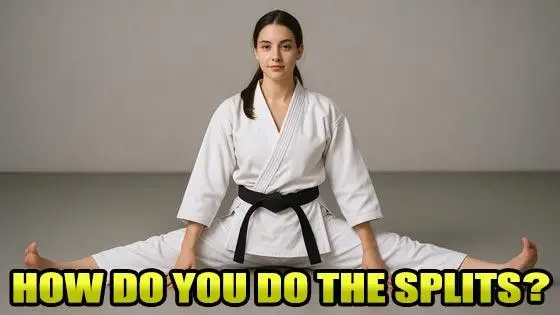

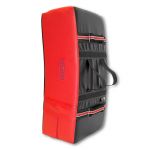

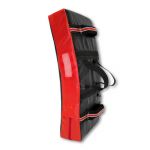
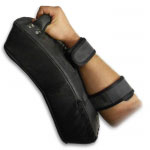
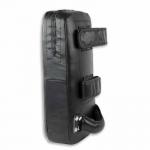
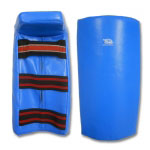
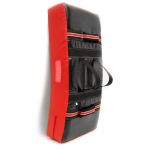
 (3)
(3)


















